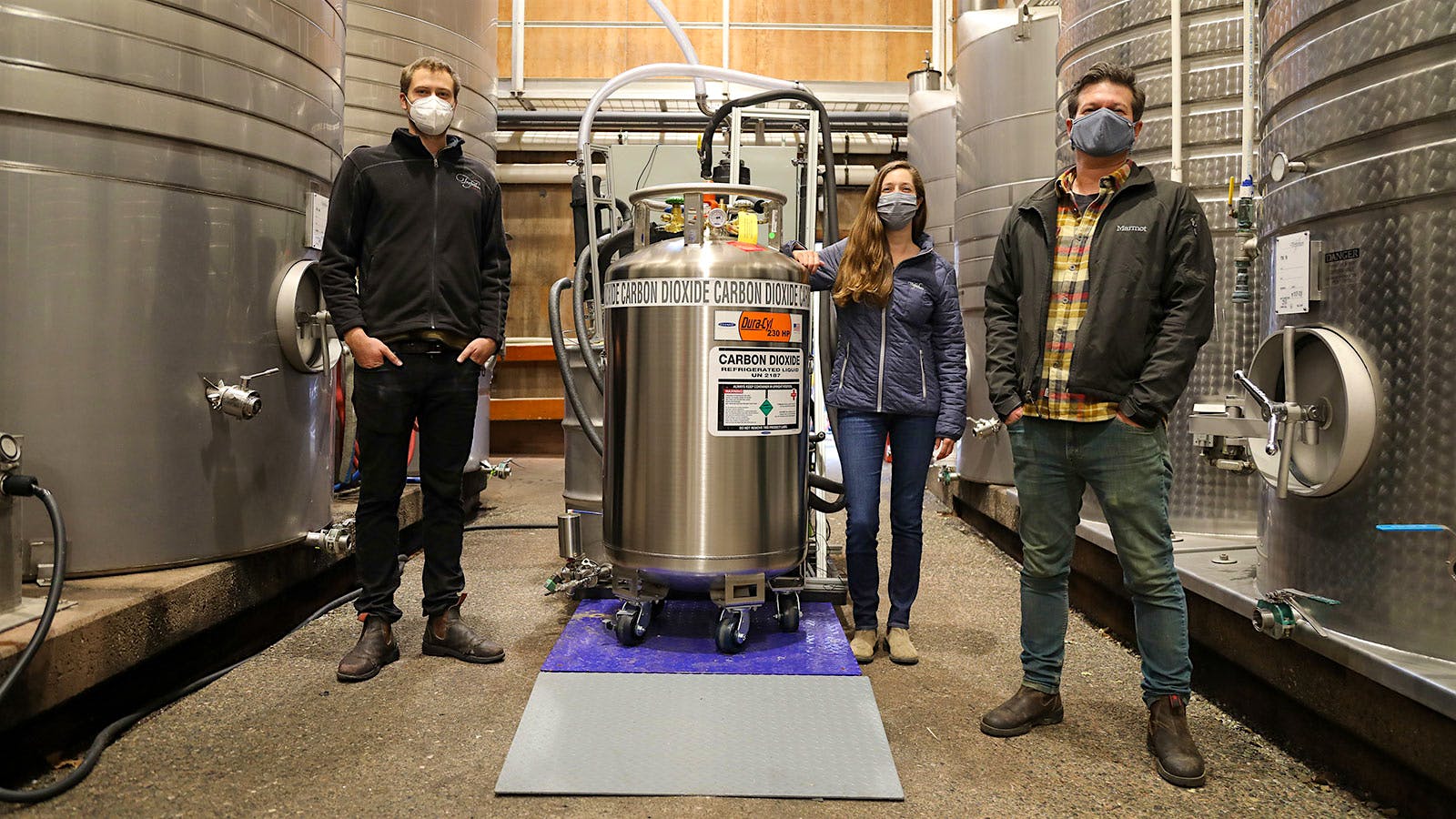Products You May Like
As world leaders meet in Glasgow this week for the 2021 United Nations Climate Change Conference (COP26) to discuss the climate crisis, the wine industry is looking at ways it can reduce its carbon footprint. One Napa winery, Trefethen Family Vineyard, has partnered with Texas company Earthly Labs for an innovative carbon-capturing pilot program at their winery in Oak Knoll District.
“The conversations happening in the wine community around climate change are really exciting. There’s a lot of momentum,” said Hailey Trefethen, the winery’s executive vice president.
Trefethen is hoping to continue learning about ways to reduce the winery’s carbon footprint. She’s enrolled in a carbon management workshop through Porto Protocol, an international non-profit Trefethen Family Vineyard belongs to that was founded by Port producer Taylor Fladgate. Porto Protocol has hundreds of members, all committed to mitigating climate change. “There are so many more tools available that weren’t available five or ten years ago in terms of being able to measure carbon footprint,” she said.
Trefethen says her team recently started discussing carbon capture. The winery’s enologist ran with the idea and connected with Earthly Labs, an Austin tech firm that has been working with breweries. Earthly Labs’ “CiCi” is a carbon capture system designed specifically for brewing. It captures CO2 from fermentation, transforms it into a liquid, purifies it and stores it for reuse. Other California wineries have carbon capture projects, but this is the first using this system.
Earthly Labs founder Amy George said she saw multinational companies scrubbing CO2 and wondered if it could be done on a smaller scale. “Beer made the most sense to start. Breweries produce it every day and could reuse it immediately for carbonation,” she explained. George says addressing smaller sources of CO2 is less costly per installation than on large facilites. “If you have a lot of people investing smaller amounts of money, you have an opportunity to scale impact faster,” she said. “We all need to move as fast as possible.”
Trefethen is Earthly Lab’s only winery customer for now, but George said she’s speaking to others who are eager to adopt. Most wineries are well-suited to add a system such as CiCi because there are water and glycol lines already running to all the tanks. Installing the technology requires connecting one more pipe to the infrastructure. The carbon gets stored in a box that is only about as big as a refrigerator. “The technology needs to be developed a bit more, but it is accessible,” said Trefethen, noting that it was a bit of an undertaking, mainly figuring out what kind of connections are best for the system.
But they’re testing and getting results. Trefethen estimates that the amount of CO2 created during winemaking is relatively tiny. Ten tons of grapes produce about two-thirds of a ton of CO2 during fermentation. For reference, a typical passenger vehicle emits about 4.6 metric tons of CO2 per year.
![Trefethen Family Vineyard]](https://mshanken.imgix.net/wso/bolt/2021-11/ns_vines110221_1600.jpg?auto=compress,format,&sharp=5&vib=20&q=70&w=320 320w,https://mshanken.imgix.net/wso/bolt/2021-11/ns_vines110221_1600.jpg?auto=compress,format,&sharp=5&vib=20&q=70&w=320 640w,https://mshanken.imgix.net/wso/bolt/2021-11/ns_vines110221_1600.jpg?auto=compress,format,&sharp=5&vib=20&q=70&w=384 768w,https://mshanken.imgix.net/wso/bolt/2021-11/ns_vines110221_1600.jpg?auto=compress,format,&sharp=5&vib=20&q=70&w=828 828w)
Sustainability has been at the heart of the winery’s culture. Trefethen said they are embarking on an in-depth greenhouse gas inventory of their business but have already been doing many things to reduce their carbon footprint. The winery has installed solar panels, purchased electric vehicles, put deposits down on electric tractors and trucks, switched to lighter glass bottles and found ways to reuse all winery wastewater. “A lot of it goes back to being all-estate,” said Trefethen. “We think of the entire property as an ecosystem.”
Trefethen said their winery doesn’t have a lot of uses for CO2, but there is a high demand locally and globally for the gas, which is in short supply this year. So the CO2 captured will likely be used locally by other wineries, breweries, and grow houses. “In the future, this could put us over the edge from being carbon neutral to positive, and that’s a great way to start talking about this and where we need to get to, not only as an industry but the whole world.”
Stay on top of important wine stories with Wine Spectator’s free Breaking News Alerts.
